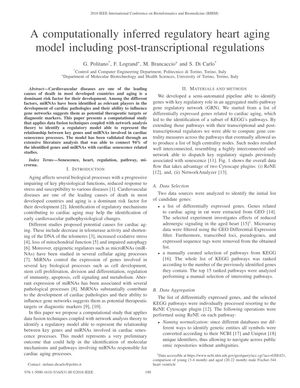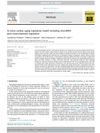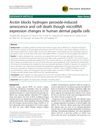A Computationally Inferred Regulatory Heart Aging Model Including Post-Transcriptional Regulations
December 2016

TLDR Researchers created a model to understand heart aging, highlighting key genes and pathways, and suggesting miR-208a as a potential heart attack biomarker.
In the 2016 study, researchers developed a computational model to investigate the regulatory mechanisms of heart aging, focusing on transcriptional and post-transcriptional regulations, particularly microRNAs (miRNAs). They used data from 8,799 microarray data points to identify 191 differentially expressed genes, which were narrowed down to 157 human homologs. The model integrated these genes with seven KEGG pathways and network analysis to identify 35 key regulatory nodes. Literature validation supported the model, with 94% of the identified genes and miRNAs previously associated with cardiac aging. The study highlighted the importance of certain pathways and regulators, including the RAF1-MAP2K-MAPK signaling cascade, the PIK3R5 gene, and the MAPK1 pathway, as well as miRNAs like miR-208a as a potential biomarker for myocardial infarction. Transcription factors such as TP53, NFKB1, and MYC were also noted for their roles in aging. The paper suggests further validation of the model through laboratory experiments.


